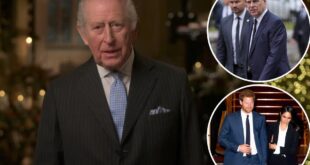Were they better off before or do you approve of their name change? Can you even still remember these brands previous names before they rebranded? Let’s look back on some of the most iconic name changes to have happened to UK brands over the years.
1. BT Cellnet to O2
Back in 2000, just as mobiles were taking the nation by storm and people can fondly remember playing snake on their Nokia 3310, BT cellnet changed its name to o2. Now used to name iconic venues such as the o2 arena in Greenwich and the o2 academy (in Brixton, Birmingham and Oxford) the name has stuck ever since. O2 remains the second largest network in the UK behind EE.
2. Midland Bank to HSBC
![]()
Midland Bank first came into existence in 1923 before it was bought out by HSBC. Despite being owned by HSBC since 1992 it kept its name for seven years until 1999 when HSBC finally phased it out. After some rather intense rumours that the Midland Bank name might be reintroduced in 2015, these fell short and the global HSBC brand has been in place ever since.
3. Jif to Cif
![]()
The official statement is that this was renamed because many nationalities in Europe often don’t have the ‘J’ sound in their pronunciation. But sure as anything the English language isn’t too familiar with a silent ‘C’ either. Is it pronounced Sif, Cif or Kif? For British people it will always remain pronounced as Jif! Considering Unilever would have European distribution the name change would make sense if they wanted to keep costs down throughout all of Europe.
4. Northern Rock Becomes Virgin Money
![]()
During the financial crisis and after the infamous ‘run on the bank’ where there were queues of people making their way down the full length of the high street and any attaching streets looking to withdraw their funds from Northern Rock, the bank was saved by Virgin Money. To little surprise the Northern Rock name didn’t stay for long and they soon adopted the iconic Virgin brand.
5. Norwich Union to Aviva
![]()
On the 1st June 2009 Norwich Union dropped its UK name of 201 years to become Aviva. It had already been using the name Aviva in its 28 international markets that were not as familiar with Norwich so, in an attempt to reflect the global brand, the financial services became known as Aviva in every country around the world in which it operated.
6. HiFX becomes XE.com
![]()
One of the first foreign exchange brokerages to launch in the UK, HiFX was well known in the money transfer industry but perhaps not to anyone else. Those who have checked for an FX rate online may well be familiar with xe.com though – the website used by virtually everyone when checking current exchange rates. So when the mega corporate Euronet acquired both HiFX and XE it made sense to keep the skilled team behind HiFX but rebrand and offer the money transfer service on xe.com.
7. The foundings of Santander
![]()
When three became one. Abbey National, Alliance & Leicester and Bradford & Bingley joined forces in 2010 to launch Santander. In the years since Santander has continued to make subtle changes to both its brand and logo.
8. Dime became Daim
![]()
If you asked a British person how it should be spelt they would always say Dime. But the Swedish found Daim bar, which launched in the 1950s, was bought by Kraft Foods in 1993 and in 2005 the decision was made to make daim the universal name for the chocolate.
9. Marathon to Snickers
![]()
If it was of your time it was a big deal! Known as Snickers in the US since the 1930’s, it was always known as a Marathon bar in the UK. If we consider we’ve just had the 54th Super Bowl then we can see just how long ago it changed name when they were advertising a trip to the 25th Super Bowl. Can you remember the year it changed? 1990.
10. The name change that never was
![]()
One of the most infamous name changes to have ever occured in the UK to perhaps the most iconic British brand. The Royal Mail, in an attempt to modernise itself and create a brand in which it could launch itself in overseas markets, became known as Consignia. The extensive consultation period, rumoured to have cost £2million turned out to be a complete failure. 16 months later the then CEO, John Roberts retired and Consignia reverted to Royal Mail. OK, this one was a failure but it had to be included for opting to return to its original name!
Source link



